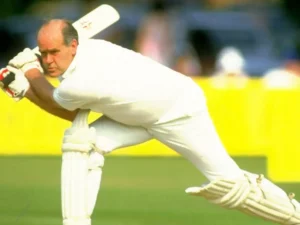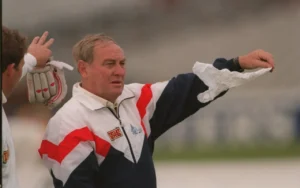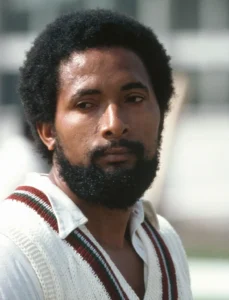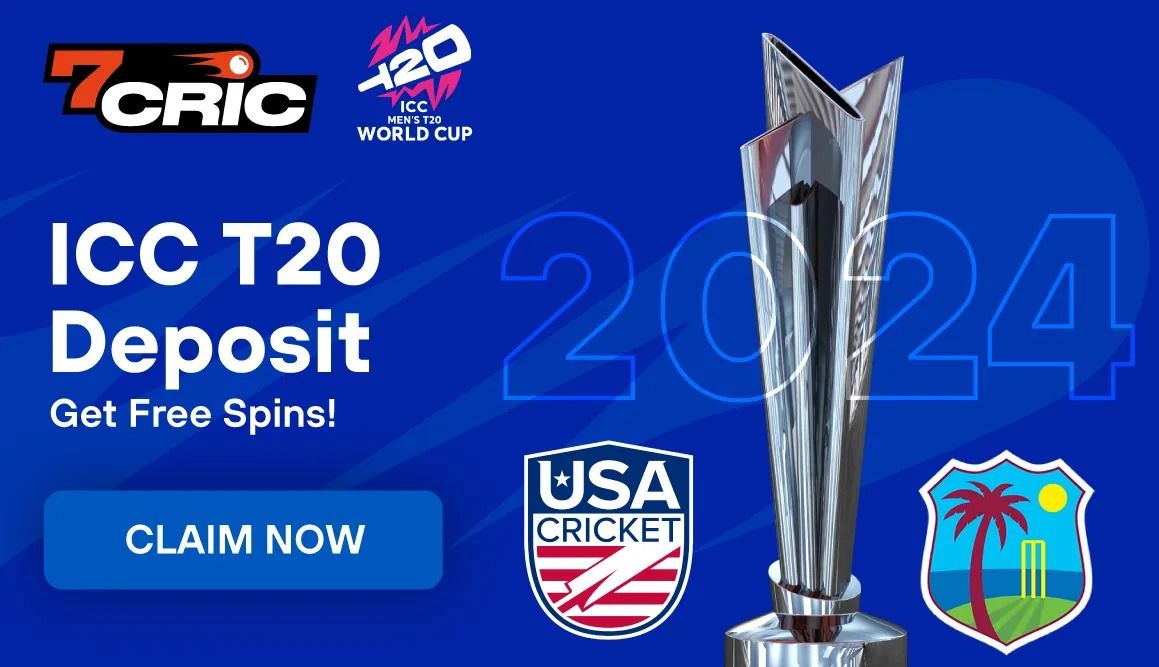Virat Kohli vs Dwayne Bravo

Virat Kohli
Batsman,
About Virat Kohli
Virat Kohli, born on November 5, 1988, in Delhi, India, is a distinguished figure in the realm of international cricket. As a prodigious right-handed batsman and an occasional medium-fast bowler, Kohli has carved a niche for himself as one of the game's finest. His cricketing journey is marked by his representation of the Royal Challengers Bangalore in the Indian Premier League (IPL) and Delhi in domestic cricket. Kohli's aggressive batting style, combined with a slightly unconventional technique, allows him to consistently score runs and set new benchmarks. His leadership skills were also recognized as he captained the Indian national cricket team, leading by example and inspiring his teammates. Over the years, Kohli's dedication and performance have earned him a place among the elite, often drawing comparisons with some of the greatest batsmen in cricket history. His achievements on the field are complemented by a massive following off it, making him one of the most influential figures in the sport.
Profile Details
About Dwayne Bravo
Dwayne John Bravo, born on October 7, 1983, in Trinidad and Tobago, is celebrated as a versatile cricketer whose career has spanned various facets of the game, making him a prominent figure in international cricket. Bravo, a right-arm seam bowler and a dynamic batsman, has made significant contributions to the West Indies cricket team, both as a former captain and as a player known for his flair and skill. His prowess is not limited to the international arena; Bravo has also shone in T20 leagues around the world, becoming one of the early legends of the format. His ability to perform under pressure, coupled with his knack for entertainment on the field, has made him a favorite among fans globally. Beyond his cricketing achievements, Bravo has ventured into music, further showcasing his multifaceted talent. As of now, he continues to influence the game as the bowling coach for Chennai Super Kings, sharing his rich experience and insights with the next generation of cricketers.
Profile Details
Batting Stats Head-to-Head
Virat Kohli vs Dwayne Bravo
Most Runs
Highest Scores
Batting Average
Strike Rate
Most Centuries
Most Sixes
Bowling Stats Head-to-Head
Virat Kohli vs Dwayne Bravo
Most Wickets
Most Innings
Economy Rate
Bowling Average
Strike Rate
Most Runs
Virat Kohli Career Statistics
| Format | Matches (M) | Innings (Inn) | Not Outs (NO) | Runs (R) | High Score (HS) | Average (Avg.) | Balls Faced (BF) | Strike Rate (SR) | Hundreds (H) | Fifties (50x) | Fours (4s) | Sixes (6s) |
|---|---|---|---|---|---|---|---|---|---|---|---|---|
| Test | 113 | 191 | 11 | 8848 | 254 | 49.16 | 15924 | 55.56 | 29 | 30 | 991 | 26 |
| ODI | 292 | 280 | 44 | 13848 | 183 | 58.68 | 14797 | 93.59 | 50 | 72 | 1294 | 152 |
| T20i | 117 | 109 | 31 | 4037 | 122 | 51.76 | 2922 | 138.16 | 1 | 37 | 361 | 117 |
| IPL | 237 | 229 | 34 | 7263 | 113 | 37.25 | 5586 | 130.02 | 7 | 50 | 643 | 234 |
| Format | Matches (M) | Innings (Inn) | Balls (B) | Runs (R) | Wickets (W) | BBM | Average (Avg.) | Economy (Econ.) | Strike Rate (SR) | 5W | 10W |
|---|---|---|---|---|---|---|---|---|---|---|---|
| Test | 113 | 11 | 175 | 84 | 0 | 0/0 | 0.0 | 2.88 | 0.0 | 0 | 0 |
| ODI | 292 | 50 | 662 | 680 | 5 | 1/13 | 136.0 | 6.16 | 132.4 | 0 | 0 |
| T20i | 117 | 13 | 152 | 204 | 4 | 1/13 | 51.0 | 8.05 | 38.0 | 0 | 0 |
| IPL | 237 | 26 | 251 | 368 | 4 | 2/25 | 92.0 | 8.8 | 62.75 | 0 | 0 |
Dwayne Bravo Career Statistics
| Format | Matches (M) | Innings (Inn) | Not Outs (NO) | Runs (R) | High Score (HS) | Average (Avg.) | Balls Faced (BF) | Strike Rate (SR) | Hundreds (H) | Fifties (50x) | Fours (4s) | Sixes (6s) |
|---|---|---|---|---|---|---|---|---|---|---|---|---|
| Test | 40 | 71 | 1 | 2200 | 113 | 31.43 | 4527 | 48.6 | 3 | 13 | 269 | 21 |
| ODI | 164 | 141 | 24 | 2968 | 112 | 25.37 | 3606 | 82.31 | 2 | 10 | 240 | 58 |
| T20i | 91 | 74 | 17 | 1255 | 66 | 22.02 | 1090 | 115.14 | 0 | 4 | 73 | 55 |
| IPL | 161 | 113 | 44 | 1560 | 70 | 22.61 | 1204 | 129.57 | 0 | 5 | 121 | 66 |
| Format | Matches (M) | Innings (Inn) | Balls (B) | Runs (R) | Wickets (W) | BBM | Average (Avg.) | Economy (Econ.) | Strike Rate (SR) | 5W | 10W |
|---|---|---|---|---|---|---|---|---|---|---|---|
| Test | 40 | 61 | 6466 | 3426 | 86 | 6/84 | 39.84 | 3.18 | 75.19 | 2 | 0 |
| ODI | 164 | 150 | 6511 | 5874 | 199 | 6/43 | 29.52 | 5.41 | 32.72 | 1 | 0 |
| T20i | 91 | 77 | 1505 | 2036 | 78 | 4/19 | 26.1 | 8.12 | 19.29 | 0 | 0 |
| IPL | 161 | 158 | 3119 | 4360 | 183 | 4/22 | 23.83 | 8.39 | 17.04 | 0 | 0 |

Virat Kohli vs Dwayne Bravo
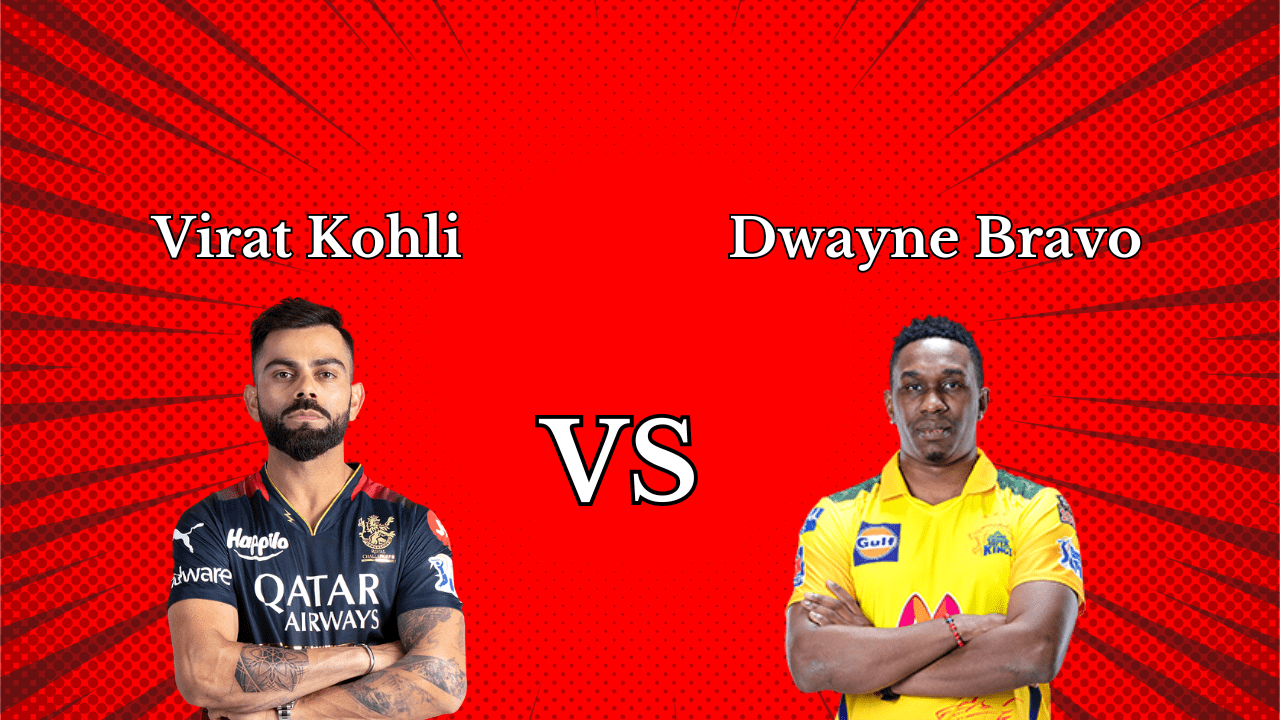
Virat Kohli vs Dwayne Bravo – In the domain of international cricket, two names that have consistently sparked interest among enthusiasts are Virat Kohli, the run machine from India, and Dwayne Bravo, the West Indian all-rounder.
A comparative analysis of their career statistics offers a compelling insight into their individual contributions, expertise, and impact in the cricketing world.
As we set out on this comparison, we shall explore their batting averages, bowling successes, fielding records, and overall influence in international cricket.
This examination promises to shed light on the strengths and unique aspects of these two dynamic players – Virat Kohli vs Dwayne Bravo.
Virat Kohli vs Dwayne Bravo: Brief Career Overview
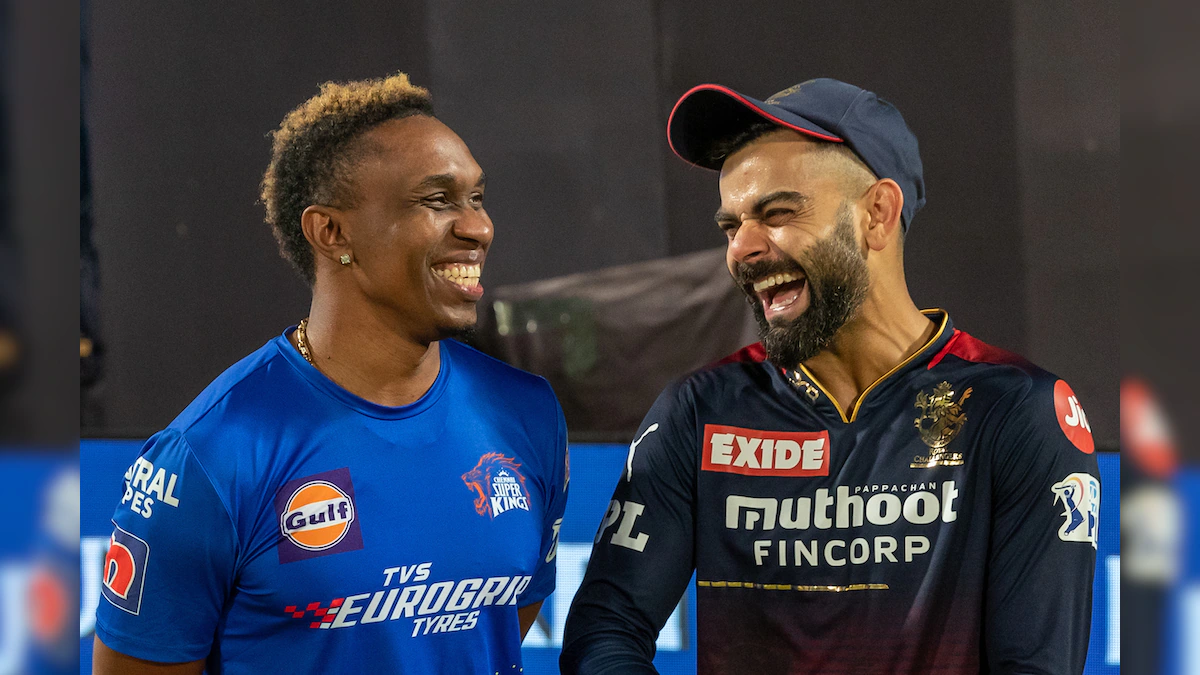
Virat Kohli, an Indian cricketing powerhouse, and Dwayne Bravo, a West Indian all-rounder, have both carved out illustrious careers in international cricket, each with their unique strengths and notable achievements.
Kohli’s career began in 2008, as a promising young talent for the Indian team. His aggressive playing style and technical prowess quickly catapulted him into the limelight.
His captaincy style, defined by a relentless pursuit of excellence and a robust competitive spirit, has been instrumental in shaping the Indian team’s success over the years.
On the other hand, Bravo’s career beginnings date back to 2004. Known for his all-round abilities, Bravo’s performances with both bat and ball have been pivotal for the West Indies.
As a captain, he exhibited a distinctive style marked by tactical acumen and a knack for extracting the best from his team in high-pressure situations.
In a broader context, the careers of both Kohli and Bravo exemplify the transformative power of sports as a means of liberation.
They each emerged from humble beginnings, overcoming numerous challenges to rise to the highest levels of international cricket.
These narratives of resilience and triumph serve as inspiration for countless aspiring cricketers around the globe – Virat Kohli vs Dwayne Bravo.
Batting Statistics: Kohli Vs Bravo
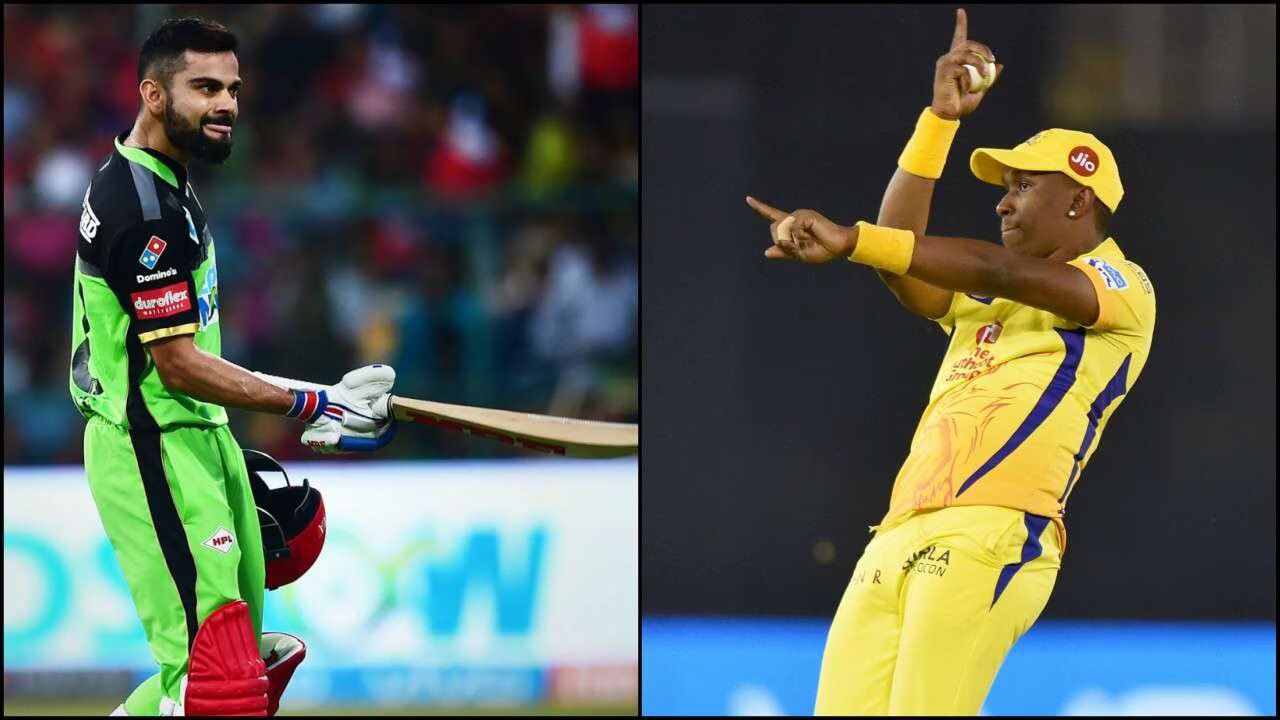
Virat Kohli vs Dwayne Bravo – While their individual career journeys offer compelling narratives, exploring the comparative batting statistics of Kohli and Bravo provides an even more nuanced understanding of their impact on the game.
The pursuit of liberation in cricket is often tied to an audience’s understanding of how personal techniques and captaincy styles influence performance.
- Virat Kohli, an Indian cricketer, has demonstrated exceptional batting prowess throughout his career. As of the latest stats, he boasts an impressive average of 52.04 in ODIs, with a high score of 183. His personal techniques, honed under high-pressure captaincy, have yielded a remarkable 43 centuries and 62 half-centuries in this format.
- Dwayne Bravo, on the other hand, is a celebrated all-rounder from the West Indies. His ODI batting average is 25.36 with a high score of 112. His personal techniques, often showcased in aggressive batting displays, have resulted in three centuries and ten half-centuries.
- As captains, their styles differ significantly. Kohli’s aggressive yet calculated approach has often propelled India to high scores, while Bravo’s cool-headed, flexible leadership has seen the West Indies through several tough chases.
These figures offer just a glimpse into the vast landscape of their respective careers. Yet, they succinctly illustrate the distinct contributions that both Kohli and Bravo have made to the game – Virat Kohli vs Dwayne Bravo.
Bowling Achievements: Bravo and Kohli
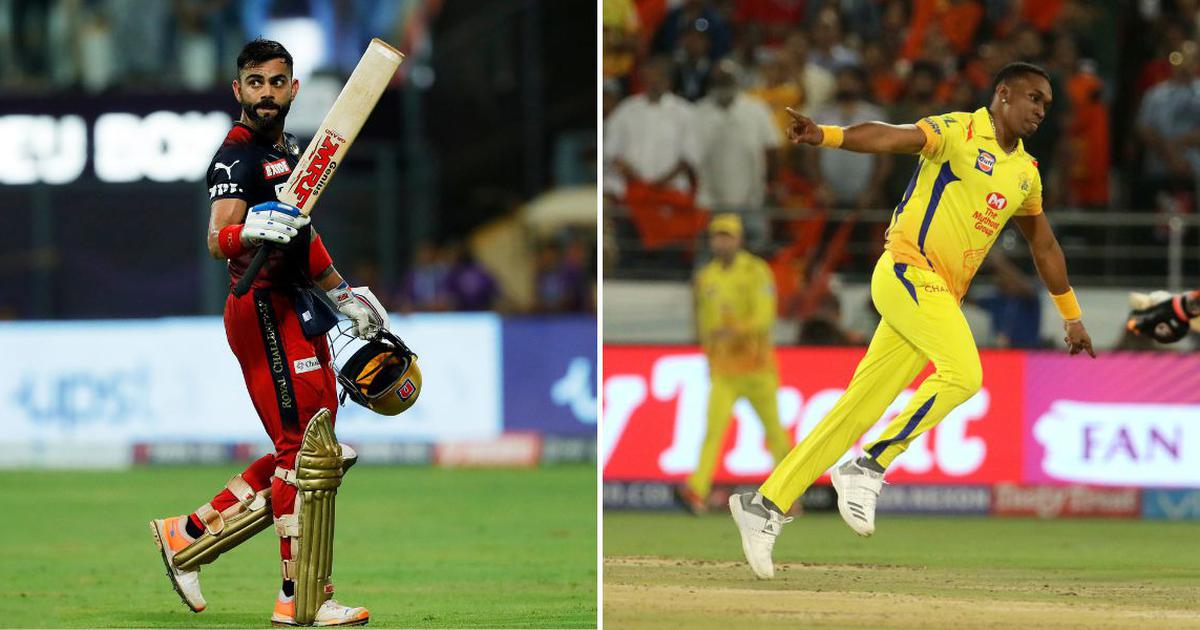
Switching gears to their bowling prowess, it becomes evident that Bravo’s contribution to the West Indies, as an all-rounder, far outstrips Kohli’s occasional trysts with the ball for India.
Bravo’s bowling techniques have been instrumental in securing many victories for his team. His distinctive slower-ball delivery and the ability to swing the ball both ways are well-documented and have made him a formidable force in the cricketing world.
He boasts an impressive tally of over 400 international wickets, a testament to his exceptional talent.
These numbers, when contrasted with Kohli’s bowling evolution, paint a stark picture. Kohli, primarily a batsman, has only sporadically bowled and his tally of wickets is a mere fraction of Bravo’s.
Despite possessing a decent seam delivery, Kohli’s bowling has been used more as a tactical variant rather than an integral part of India’s bowling lineup – Virat Kohli vs Dwayne Bravo.
Fielding Records Comparison
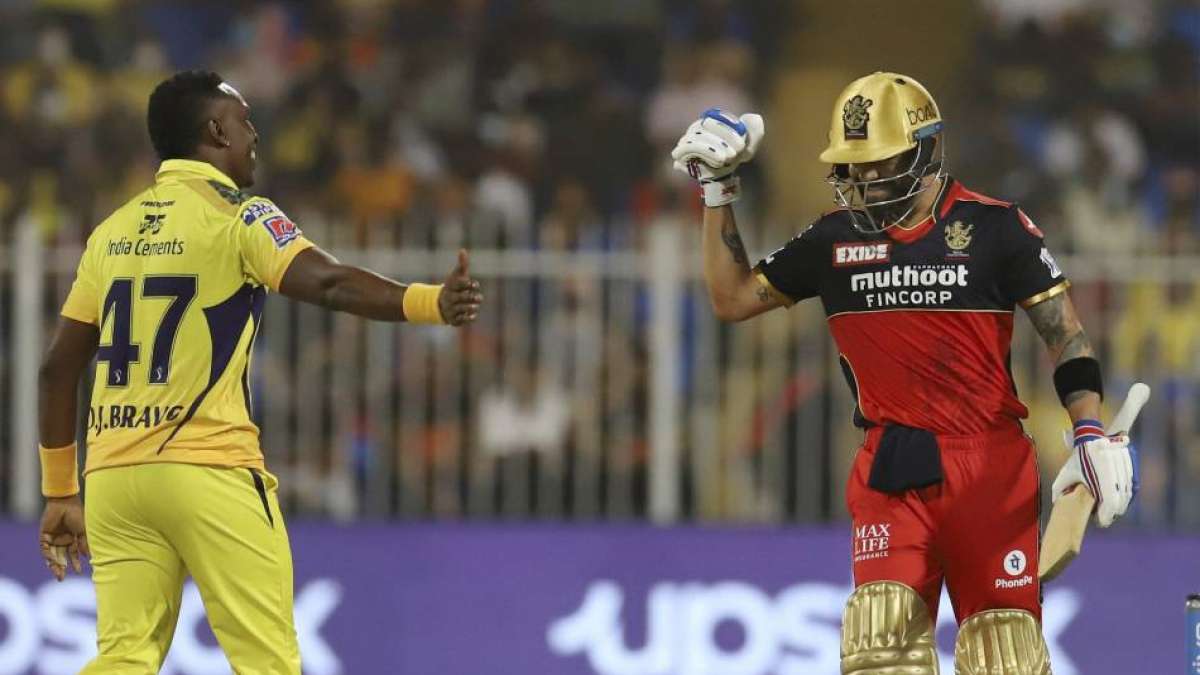
Virat Kohli vs Dwayne Bravo – Moving from their bowling prowess to their fielding capabilities, it becomes necessary to underscore the distinct roles Kohli and Bravo have played in their respective teams.
- Kohli, known for his agility and reflexes, has been a cornerstone in the Indian team’s fielding. His ‘evidence’ throw’ technique stands out. This technique involves aiming directly at the stumps rather than throwing the ball to the wicket-keeper. Kohli’s exceptional precision and accuracy make him a formidable fielder.
- Bravo, on the other hand, is recognized for his spectacular catches in the outfield. His ‘backpedaling and diving catch’ technique is worth noting. Bravo’s agility and speed, paired with his ability to judge the ball’s trajectory, set him apart. His catches often change the course of a match, demonstrating his significant contributions in the field.
- Fielding techniques comparison between Kohli and Bravo reveals their unique strengths. While Kohli’s direct throws are a proof of his agility and precision, Bravo’s catches display his exceptional reflexes and agility.
Impact in International Matches
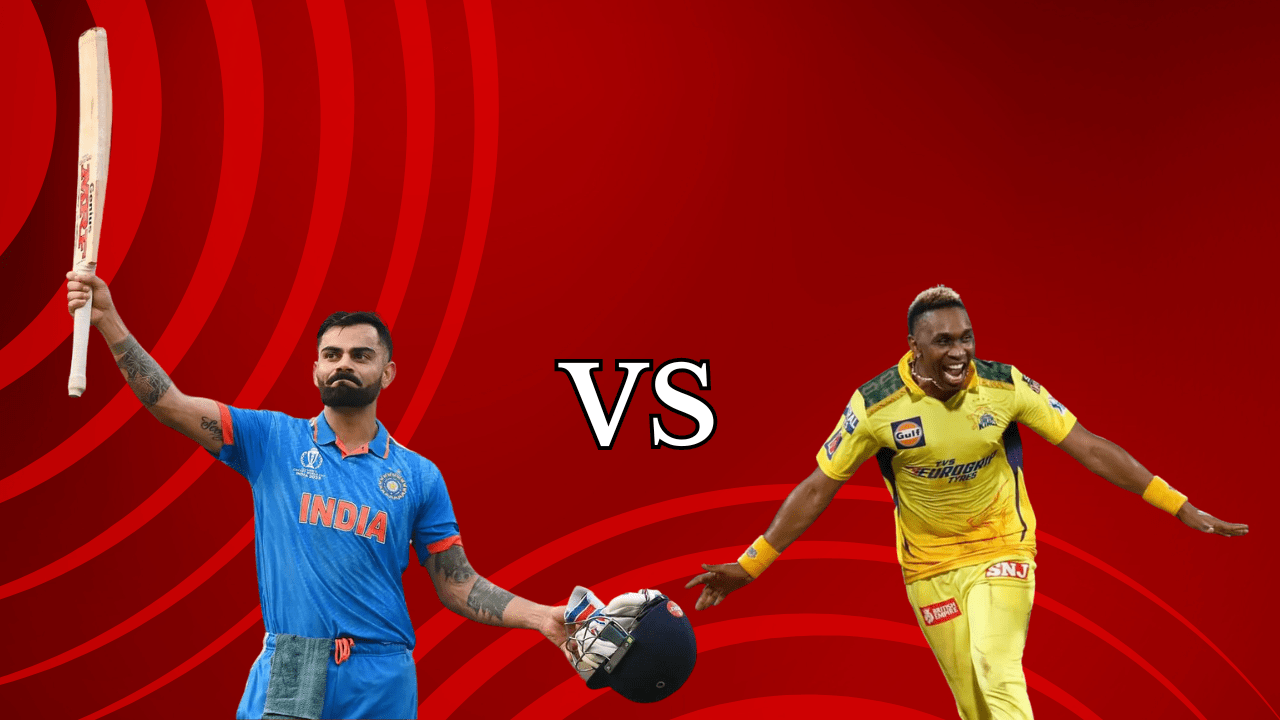
How have Virat Kohli and Dwayne Bravo influenced the course of international matches with their performances? Both have carved their niches in the cricketing world, with their distinctive styles and impactful performances.
Kohli’s influence is profound, particularly under the lens of Captaincy Influence. His aggressive approach and tactical acumen have guided India to multiple victories.
His batting prowess, coupled with a strong understanding of the game dynamics, has culminated in a transformative impact on the team’s performance.
Bravo, on the other hand, is renowned for his all-round capabilities. His versatile performances, whether with bat or ball, have often tipped the balance of the game. His Captaincy Influence, especially in T20 cricket, has been a source of inspiration for many.
Their impact extends beyond the cricket field, with significant Sponsorship Deals amplifying their influence.
Kohli’s endorsement deals with brands like Puma and MRF reflect his commercial appeal, while Bravo’s association with brands like 10PL and GT20 Canada mirrors his global popularity – Virat Kohli vs Dwayne Bravo.
Conclusion
To sum up, the comparison between Virat Kohli and Dwayne Bravo’s cricket careers reveals a fascinating contrast in playing styles and roles within their respective teams.
While Kohli’s prowess in batting is evident, Bravo’s all-round contribution in batting, bowling, and fielding cannot be overlooked.
Their performances in international matches have left significant impacts, cementing their statuses as key figures in international cricket.
This comparative analysis provides a thorough understanding of their contributions to the sport – Virat Kohli vs Dwayne Bravo.
Frequently Asked Questions (FAQs)
What Are Some Notable Awards and Recognitions That Virat Kohli and Dwayne Bravo Have Received Throughout Their Careers?"
Virat Kohli’s leadership has earned him prestigious accolades including the Sir Garfield Sobers Trophy.
Dwayne Bravo’s musicianship and cricket prowess led to the ICC ODI Player of the Year award, showcasing their multifaceted talents.
How Has the Personal Life and Off-Field Activities of Kohli and Bravo Influenced Their Cricket Career?"
Kohli’s fitness regime has notably impacted his performance, enhancing his agility.
Conversely, Bravo’s music career has shaped his persona, adding an entertaining dimension to his game, demonstrating the influence of personal life on cricketing careers.
What Are Some of the Significant Controversies or Setbacks That Virat Kohli and Dwayne Bravo Have Faced in Their Cricketing Careers?"
Kohli’s cricketing journey has faced criticism for his overt aggression, while Bravo’s music career has been viewed as a distraction.
Both controversies, however, have not deterred their performance on the cricket field.
How Have Virat Kohli and Dwayne Bravo Contributed to Their Respective Teams Outside of Their Own Performances?"
Both Kohli and Bravo have greatly contributed to their teams through their strong leadership approach and by setting high standards of sportsmanship.
Outside cricket, they’ve made notable charitable endeavors, uplifting their communities and inspiring many globally.
What Are the Unique or Standout Techniques and Strategies That Kohli and Bravo Are Known for in Their Cricketing Careers?"
Kohli’s aggression on-field is his unique strategy, driving his high scoring rate.
On the other hand, Bravo’s dance celebrations post-wicket capture are his trademark, adding an entertaining aspect to his skilled bowling and fielding.





